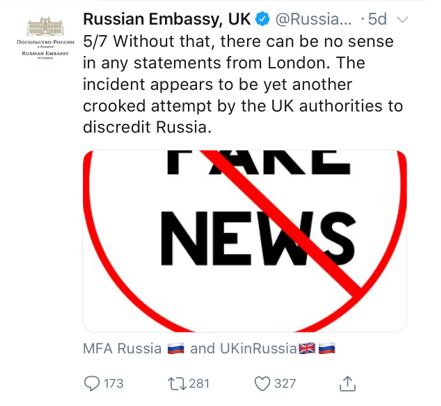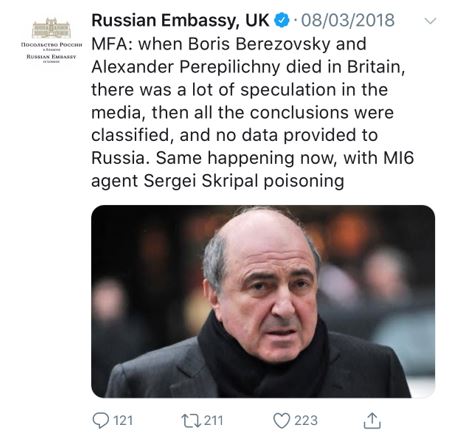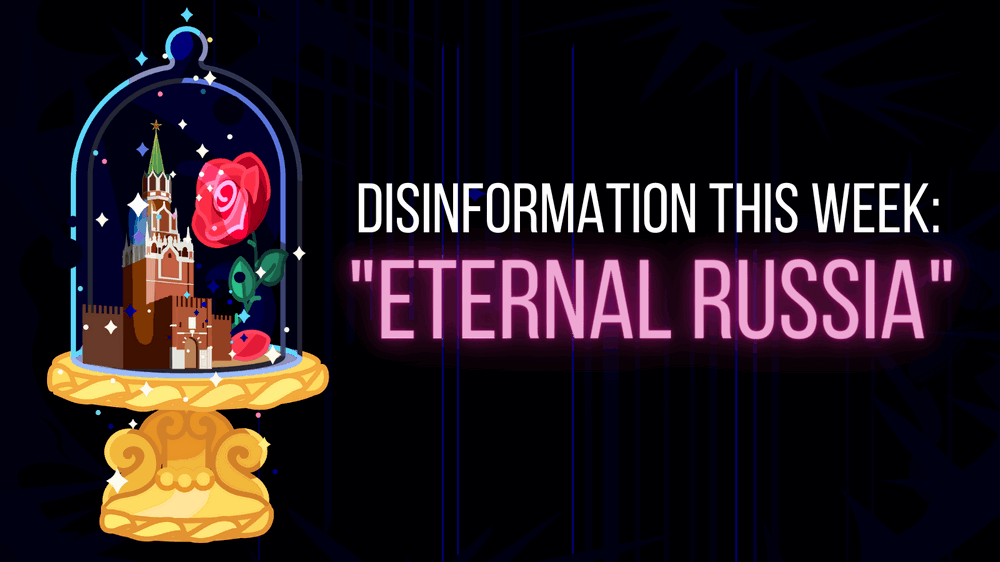Tweets of the Russian Embassy in the United Kingdom, which deny Moscow’s responsibility for the former double agent Sergei Skripal and his daughter’s poisoning with the nerve agent “Novichok” are prime examples of how Kremlin propaganda works today.
Let’s examine a few specific examples of how, according to the United Kingdom’s Foreign Secretary Boris Johnson, Russia is hiding “a needle of truth in a haystack of lies.”
1. Trolling

“Does Russia’s dialing code 007 make James Bond a ‘Russian spy’?” “In absence of evidence, we definitely need Poirot in Salisbury!” Such tweets were sent by the Russian Embassy in the United Kingdom to mock the British investigation by suggesting that all the accusations of Russia were simply fiction, that the British do not have and cannot have the proof and even the best literary detectives and agents could not help them solve the case.
2. The “Russophobic” card

In one of the posts the Russian Embassy has announced that the whole investigation of Sergei Skripal’s and his daughter’s poisoning is simply yet another dishonourable effort of the UK authorities to discredit Russia. In this case, the whole narrative is reconstructed so that Russia is made into a victim whose reputation is unfairly damaged. This card can be played whenever it is intended to demonstrate that all the unfavourable facts about Russia are a premeditated action against Moscow.
3. This could have been done by anyone

In one of the tweets, the Russian Embassy in the UK quoted the scientist Vil Mirzayanov who supposedly came up with the name for the nerve agent “Novichok.” They claim that the British could have easily produced this agent by referring to the formulas which the scientist himself revealed in 2008. Another tweet claims that although Russia terminated all the Soviet chemical weapon programmes in 1992, there were scientists who moved to the West to supposedly continue the research, implying that this secret agent could have been produced by the British too. By creating an impression that anyone could have had this agent, Russia attempts to present itself as in no way responsible for the usage of the poison or not being able to guard it. A simple tactic is applied where everyone could be a potential suspect and in the end it leaves no suspects at all.
4. The confidentiality of the investigation

The Russian Embassy has tried to spread mistrust in the British investigation as it is supposedly confidential and Moscow is not being provided with the necessary information to ensure collaboration. This is an attempt to create an impression that, in case the true facts were revealed, Russia would be quickly acquitted on the charge of Sergei Skripal’s and his daughter’s poisoning. This narrative, however, has yet another subtext: Moscow’s pressure to obtain access to the information. Russia acted in the very same manner during the investigation of shooting down the Malaysia Airlines Flight MH17 and the investigation of Kremlin’s meddling in the US election. It is well known that in order to ensure security, no information will be provided to Russia as an interested party, so the games are being played in order to show that confidentiality in this case means the desire to falsify the whole investigation.
5. Tendentious fact selection

The Embassy in its tweets repeatedly stresses that Sergei Skripal was an M16 and not a Russian agent. In this case the goal is to create an impression that because he was a British agent, we should look for the guilty exactly among the British.
All these tactics perfectly reflect Kremlin’s construction of the post-truth world where you can deny even the most evident facts. However, a more thorough exploration of the facts provides us with the means to detect and deconstruct the dangerous disinformation.
Read also:
- Russian media have published 20 different narratives on Skripal poisoning
- Behind the smokescreen: who are the actors spreading disinformation on ex-Russian spy Skripal
- Putin has come out a winner in the Skripal Case, Kirillova says
- The bold assassination attempt on ex-Russian spy Sergey Skripal in Salisbury, England
- Moscow’s development of poisons like one used against Skripal has long history and dark shadows
- Three important lessons of the Skripal Case the West has yet to learn
- Also in Russia a Russian hand is seen behind the nerve-gas attack in Salisbury
Russia’s disinformation approaches to Skripal’s case are very similar to the ones used in the case of the shot down MH17 airliner:
This is because the disinformation in both the MH17 and the Skripal case are rapid fire conspiracy theories. See our primer from the series A guide to Russian propaganda:






